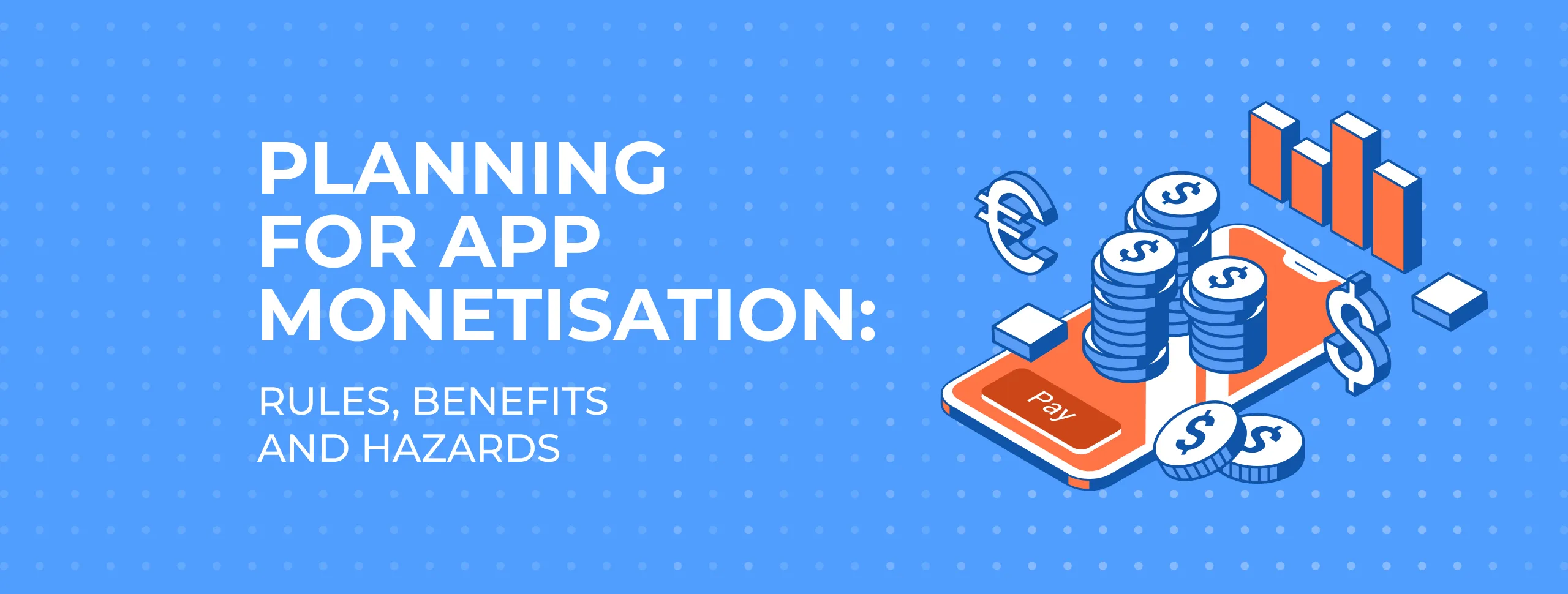
Planning for App Monetisation: Rules, Benefits and Hazards

Imagine launching your amazing new app from the hottest development agency in town. You’ve envisioned the cash rolling in while you relax, but in reality, app success demands a strategic approach to turn potential into profits. If you've ever checked your revenue dashboard and felt shocked, confused, or disappointed, you're not alone.
In a market teeming with millions of apps, effectively monetizing growth doesn’t happen by accident. Only around 4% of apps pull in more than $500K monthly—and they succeed because their teams planned smart, customized monetization strategies tailored to their product and audience.
How to Break into the Top 4%?
Every choice matters, so consider each one carefully. Here’s an overview of the most effective monetization models to help you identify which approach (or mix of approaches) best suits your app.
1. Freemium
“Free + Premium” is a tried-and-true business model where you give users a taste of your app’s value for free and offer enhanced features for a price. This model works when your app’s free version is compelling enough to attract users while leaving them wanting more, encouraging them to upgrade.
Ideal for Freemium if:
- Additional features justify the price.
- The free version attracts and engages users without giving away too much.
- You’re targeting a large audience that’s willing to upgrade.
2. Limited Trial
Offering a limited trial period (often 7 to 60 days) can convert casual users into committed customers. This strategy is common for apps that provide essential or recurring services, encouraging users to experience the full potential of your app before they commit to a paid plan.
Ideal for Limited Trial if:
- Your app is designed for frequent or regular use (e.g., productivity tools).
- Your audience values the app’s benefits enough to pay after trying.
- You have a strong, trusted brand that instills confidence.
3. In-App Advertisements
Advertising offers two paths: selling ad space to other brands or using the app as your own billboard to cross-promote your services. For users who dislike ads, combining ads with a Freemium model (e.g., offering an ad-free version for paid users) can be a win-win.
Ideal for In-App Ads if:
- You’d rather not rely solely on user payments.
- You have a massive audience that will generate significant ad impressions.
4. Subscriptions
A subscription model (a variation of Freemium or Limited Trial) allows users to pay periodically for access, making it perfect for apps with constantly updated or dynamic content. By offering multiple subscription options, you can appeal to different user segments and potentially increase customer retention.
Ideal for Subscriptions if:
- Your app provides regularly updated or new content (e.g., news, data analytics).
- Users benefit from ongoing access to your app’s features.
- Your audience is comfortable paying for recurring access.
5. Paid Apps
Charging a one-time download fee can be effective, but it demands a robust marketing effort to prove the app’s value. Paid apps should offer unique, high-quality experiences, as users expect great performance right out of the gate.
Ideal for Paid Apps if:
- Your app stands out from free alternatives and offers exceptional value.
- You have a solid brand reputation for delivering top-quality apps.
- You have a strong marketing strategy to showcase the app's value before purchase.
6. In-App Purchases
In-app purchases allow users to buy incremental upgrades or features within the app, often seen in gaming but also applicable in other fields. These purchases could range from aesthetic customizations to consumable items or even unlocking levels of functionality.
Ideal for In-App Purchases if:
- Your app’s primary purpose involves selling items or offering upgrades.
- There are opportunities to offer temporary or repeatable enhancements that users find valuable.
Choosing the Right Monetization Strategy
When deciding on a monetization model, consider these key factors:
-
Target Audience: Define who will use and pay for your app. User behavior varies across regions, so you’ll want to align your strategy with both solvency (for instance, high-spending audiences in the US, UK, and Japan) and volume (significant user bases in Asia and South America).
-
App Category: Monetization strategies often vary by app type. For example, Limited Trial or Subscriptions might be ideal for professional tools, whereas Freemium and Ads suit broader, entertainment-focused apps like games.
-
Competition: Analyze both free and paid competitors to see where they succeed and fall short. Determine how to outshine them with a unique value proposition.
With these six monetization models, you have a toolkit to build a sustainable revenue stream for your app. Don’t hesitate to combine methods or adjust strategies over time—successful monetization is built on flexibility, experimentation, and creativity. Start by identifying which model (or combination) aligns best with your app’s unique strengths, and watch your app turn into a profitable venture.





